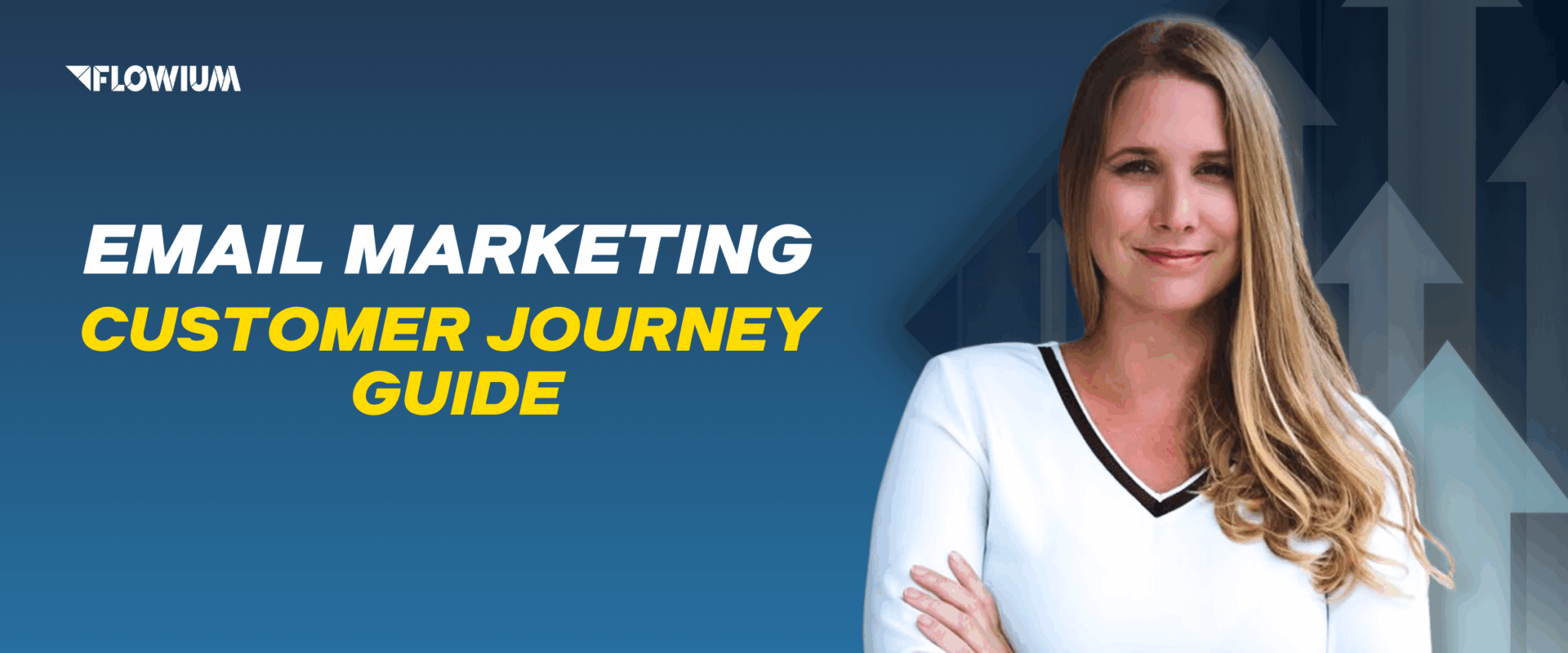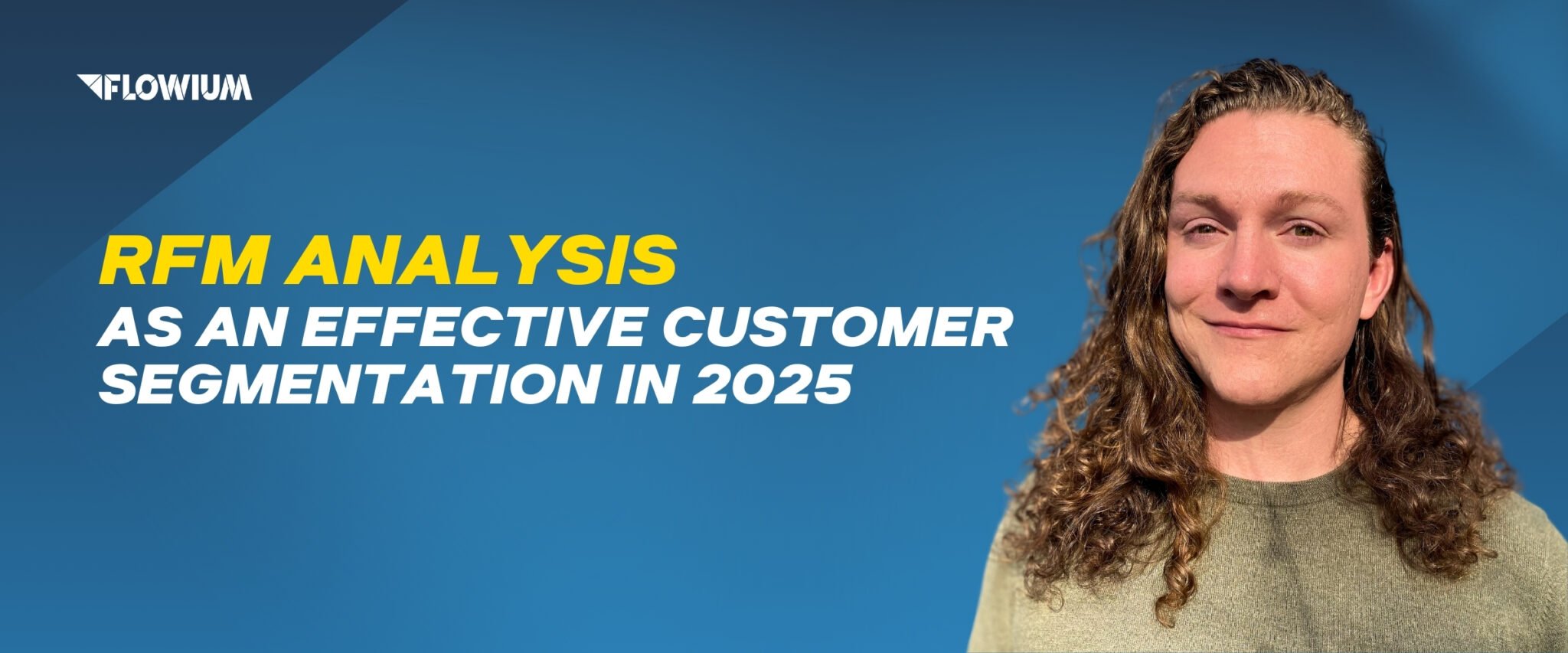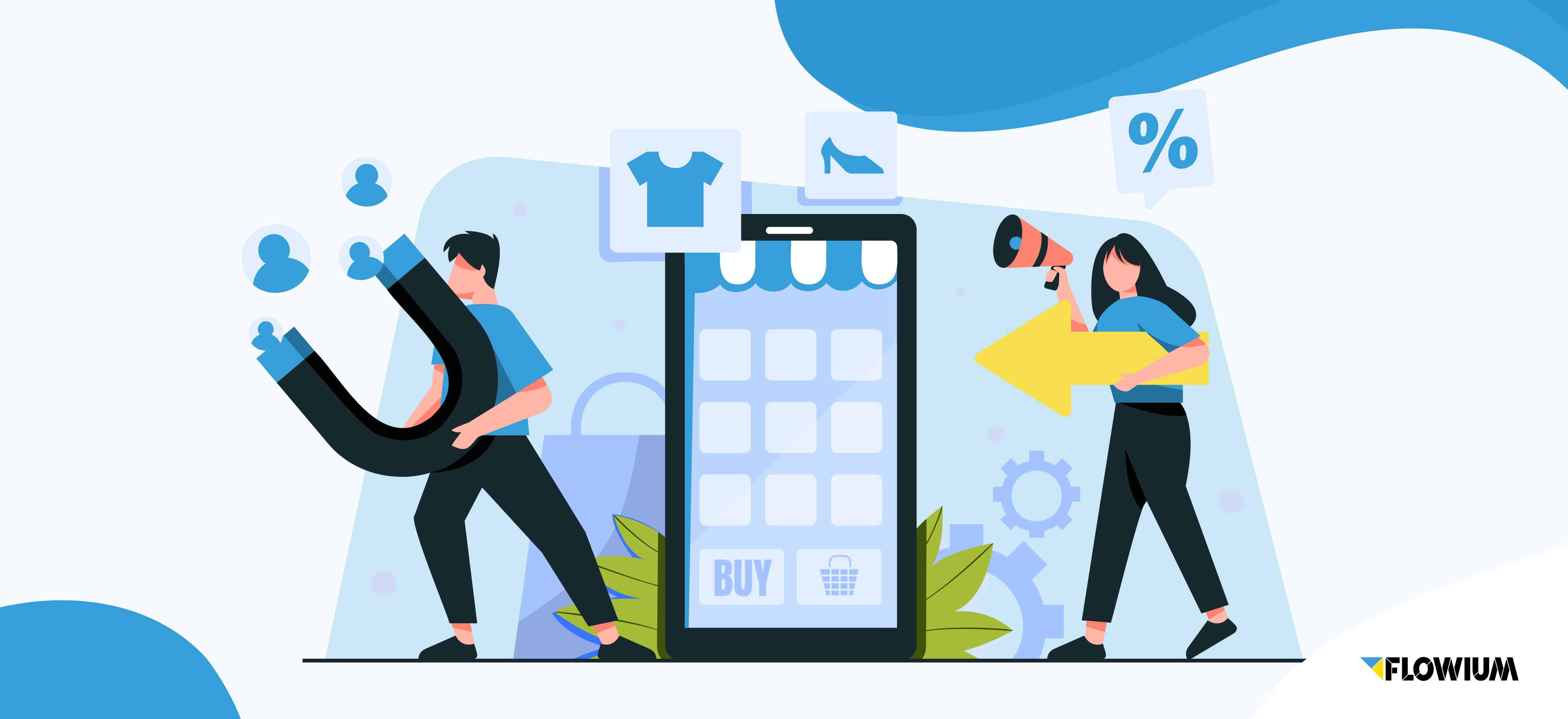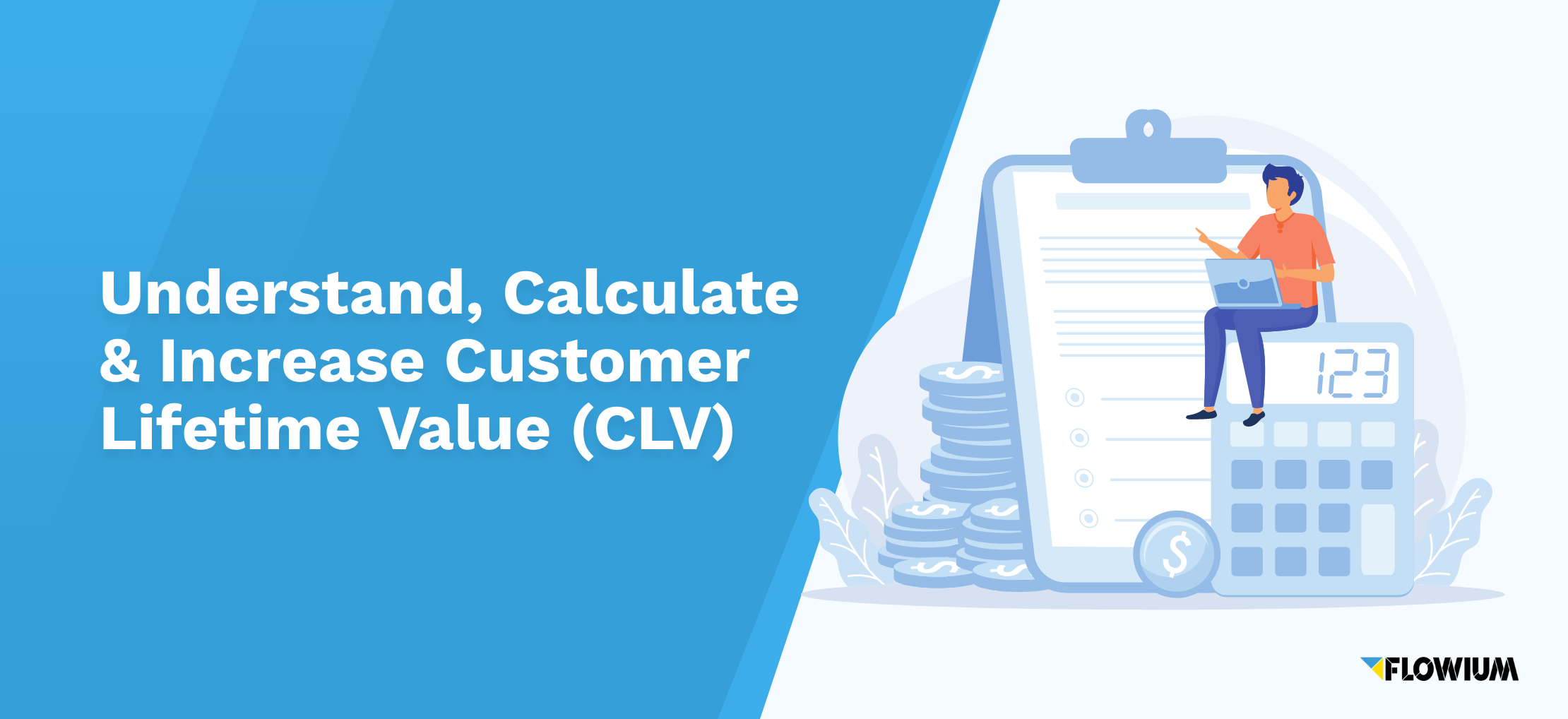Building strong relationships with your customers isn’t the same as getting from point A to point B. It’s often a steep and twisting pathway that requires measured strategies and continuous efforts to achieve success. Establishing the connection, encouraging engagement, and nurturing a long-term partnership are only possible if you have built a professional marketing approach and effective communication. At the same time, taking the first step in walking up this path can be as easy as sending a single email.
What kind of email should it be? What are the next steps?
In this article, we’ll explore the best ways to understand and create a successful email marketing journey. Read ahead to learn how to send the appropriate message at the correct moment to enhance the experience of your audience and collect benefits for your business.
What Is the Email Customer Journey?
In general terms, the customer journey describes the entire customer experience with your brand, starting with the first contact with your company to the last interaction or current status update. Some marketers even expand this term, making the emerging need for your product the starting point.
Since not every customer takes the same route from one stage to the next, their experience won’t always be linear. It can take turns when customers run into obstacles that keep them from taking action or moving to the next purchasing stage.
In email marketing, you can often find a similar term called email journey, which is actually one of the components of an integrated customer journey approach. While the major idea behind it stays the same, its main focus is the creation and use of targeted emails that trigger certain actions to nurture leads. They can receive marketing materials that encourage them to make a purchase, subscribe, show brand loyalty, or accomplish another objective for your company.
Its purpose is to manage both the onboarding of new clients and the maintenance of the engagement of existing ones.
Example:
The first email usually marks the beginning of the email customer journey. It can be a welcome email, a transactional message, or the lead’s first promotional campaign.
After a predetermined period or when they encounter another trigger, these subscribers receive subsequent emails in the journey.
Why Is the Email Marketing Journey Important?
Understanding every step that your clients potentially take while interacting with your brand is essential for creating a targeted strategy. By determining these touchpoints, you’ll know where, when, and how you need to contact your audience for an optimized purchasing process and experience in general. Overall, creating a comprehensive customer journey email marketing strategy will give you substantial benefits.
- Enhanced Email Personalization
It’s hard to overestimate the value of personalization in email marketing. A well-crafted email journey allows you to meet your clients at the exact stage they’re at and provide the most relevant content possible. Sending exclusive content and addressing them personally based on the available data makes your marketing more conversational rather than a monologue. This subsequently enhances the experience with your brand and helps build a community.
- Increased Engagement
Going in blind into sending campaigns to your audience can quickly lead to email fatigue. Crafting your email journeys effectively is a great countermeasure that helps to keep up the engagement longer. With a well-measured timing at every touchpoint and value-driven content, you can easily avoid overwhelming your contacts while keeping their attention focused on your offers.
- Improved Conversion Rates
Starting off your dialog by trying to sell something to your leads won’t take you far with conversions. First, you need to go through onboarding, set up effective communication, and build trust. With the correct email journey, you’ll know exactly when your prospects are ready to buy. Then you can send them targeted promotions without risking pushing them away.
- Easing Transition
With all actions, touchpoints, and obstacles laid out before your eyes, you can streamline the transition of your recipients to the next stage of their customer lifecycle funnel.
- Reduced Sales Cycles
It’s easier for clients to make purchasing decisions when you guide them through their customer journey. When they move through the stages seamlessly and without interruptions, it leads to reduced sales cycles.
- Saving Time
Entailing the previous benefits, you also get all your processes sped up thanks to the email customer journey being an automated strategy.
- Better ROI
Emails that are specifically tailored to the needs and preferences of the recipients are more likely to result in better returns.
- More Successful Loyalty Programs
Customer journey email marketing can supply essential information to your whole marketing strategy on what strategies lead to building brand loyalty. This can increase customer satisfaction and help create a loyalty program that your target audience will actually enjoy. As a result, you improve your overall customer retention.
- More Efficient Multichannel Marketing
We often recommend taking an integrated approach to your marketing efforts based on the received data. You can use the insights gathered from mapping the email journey to develop your SMS strategies, social media tactics, or other channels like direct mail marketing.
How to Do Email Journey Mapping
Creating an email marketing journey map requires gathering data across the available channels where your clients usually encounter your brand. From each of these channels, you’ll be able to distinguish the key factors to consider for the high-quality mapping. They usually include customer behavior patterns, the environment and conditions created by your business, and interaction points. Let’s look at all of them in detail.
Buying Process
The first thing you need to consider for your email journey map is your buying process. More often than not, your connection with clients forms when they visit your website intending to buy something. Therefore, you must have a full understanding of how your purchasing process looks for the user, what channel they come from, and what parts you need to optimize.
Knowing this process will help you better tailor your marketing emails. For example, if a customer purchases anything after viewing a TikTok ad, you can target them with an influencer campaign or other pertinent email message. For consumers who typically make purchases in person, you can give discounts or bonus points to spend at the store of their choice.
Actions
You can send more pertinent emails if you better understand the user’s behavior, going beyond conversions. Find out if they look for online reviews, browse your products on your website, or follow you on social media. Then, you can incorporate customer reviews in your marketing emails, for instance, if people usually look for evaluations before purchasing.
Pain Points and Obstacles
Even if you consider your processes perfected, not all clients might share your view on things, as for each of them, engaging with your brand is a unique experience. You must recognize what parts of this experience can confuse or discourage your audience and address them quickly. For most businesses, these pain points and blocks we divided into 3 main categories that you can see below.
- Motivational. This block describes cases when customers get disinterested in the product or reconsider their purchase. To overcome this barrier, your goal is to identify the main motivational points for your clientele and use them in timely and engaging email campaigns.
- Experiential Barriers. User experience, or UX, is the key to a smooth customer journey because if your website is unintuitive or your email isn’t functioning properly, prospects might go elsewhere. To find UX problems that could lead customers to abandon their baskets, such as a sluggish or annoying payment procedure, marketing is essential in obtaining customer feedback.
- Temptation Barrier. Customers sometimes begin to believe that they may obtain a better offer from a competitor if they aren’t focusing all of their attention on your company. Customer feedback and data on customer drop-off points can be compared with competition research data to gain some understanding of this barrier.
Solutions
Recognizing the problems that clients face isn’t the final destination in your email journey mapping process. After gathering this information, it’s essential to address the most prevalent problems and make sure your clients understand your answers.
This can be accomplished by sending out a marketing email introducing your solutions and offering the recipients a discount on their subsequent purchases as an incentive to choose them.
Touchpoints
Your customers interact with your brand through customer service, website visits, and promotional emails. Identifying these encounters allows you to see how consumers proceed through their trip.
Touchpoints are not always obvious; frequent examples include follow-up emails, abandoned cart warnings, and welcome emails. Indirect responses, such as social media comments or online reviews, are also counted.
This step identifies and defines essential touchpoints in the customer journey. These touchpoints must be tuned to provide a smooth experience.
What Are the Stages of the Email Marketing Customer Journey?
Each stage of the email customer journey plays an important role in guiding your audience from the first interaction to long-term advocacy. Understanding these stages can help you develop more targeted and effective email campaigns. Let’s look at them in detail.
1. Brand Awareness
- First interaction through social media, internet advertisements, or content marketing.
- Website visit to peruse offerings.
This stage is when potential customers first learn about your brand, similar to getting a glimpse of a billboard selling the best coffee in the world right off the next exit.
Now that they are aware of your existence, they are researching your rivals and reading reviews. Like free taste testing at the coffee shop, your emails here must astonish them.
What Type of Email to Send: Welcome series, brand story, mission email.
2. Consideration
- Consumers conduct research, read reviews, and compare products. They also engage with informational content through webinars, videos, and blogs.
A prospective buyer will begin considering their options as they get closer to making that purchasing decision. This indicates that people are comparing your brand to that of your rivals. This phase of the customer journey is crucial because you need to show more advantages to overcome competition.
Email Type: Product education, UGC, blog drops.
3. Decision and Purchase
- Your prospects are evaluating various features, comparing their options, and assessing pricing points.
At this stage, it should be your responsibility to motivate them to act. Concentrate on clearing up any remaining questions and demonstrating the worth of your goods or services. Discounts or special offers like free shipping may sway a customer’s choice to buy. Make sure that you have a fine-tuned purchasing process if you don’t want to create obstacles and deter potential clients from becoming current clientele.
Email Type: Abandoned cart, urgency offer.
4. Post-Purchase
- Clients expect clear and direct communication on the status of their order.
- Leaving product and service reviews, and possible communication with support for assistance or problem resolution.
- Opportunities for cross-selling/upselling.
After a customer makes a purchase, marketing doesn’t stop. Communication is crucial at the point of sale, and marketing is all about it. Don’t forget to send product follow-up emails, order notifications, and thank-you cards, especially to first-time customers. Incorporate product suggestions into customized emails. You can also send product review requests to obtain user-generated content and testimonials for your next promotions and service improvement. Offer incentives to encourage engagement.
Email Type: Thank you, transactional, product tips.
5. Retention
- Satisfied customers make more purchases and actively engage with your content.
- Participation in loyalty and referral programs.
Following a sale, the emphasis switches to retaining the customer’s satisfaction and interest. The goal of retention emails is to make sure the recipient feels appreciated and thrilled about their continued association with your company.
Offering discounts to your top clients, recognizing milestones like anniversaries, and soliciting feedback from your clientele are just a few strategies to foster loyalty. You should reward these loyal consumers as such, since they are valuable. Consider providing them with special goods, such as the newest deals and advanced looks.
Email Type: Loyalty perks, new drops, seasonal picks.
6. Re-engagement
- The inactive segment of the audience might need special motivation in the form of incentives to engage and become second-time buyers.
Even inactivity can also be a touchpoint on a customer journey. There are many opportunities to strengthen your relationship with your audience, even when some contacts haven’t interacted with your business. You can re-engage a customer by sending them special offers. It’s important to remind unengaged customers how important they are to your business.
Email Type: “We Miss You”, winback offers.
7. Advocacy
- Satisfied clients share their experience and opinion about your brand with others and support your initiatives.
An optimized email journey increases the likelihood that happy customers will recommend others, which may be a great tool for growth without additional investments. Loyal customers basically become your brand ambassadors who voluntarily recommend your goods and services when you surpass their expectations at every stage.
Email Type: Review request, referral invite, UGC request.
At Flowium, our experts use the knowledge of customer journey stages and best practices of mapping to create an effective email marketing strategy. Of course, when we create it for our clients, we consider the specifics of every business, market segment, and many other factors to develop the most actionable plan. Here’s an example of how our customer journey map typically looks.

How to Create and Implement an Email Journey
Collect Customer Data
Utilize surveys, internet analytics, and previous purchase history to collect pertinent customer data. The creation of precise and perceptive customer journey maps will be based on this data. Many customer journey issues could arise if the customer data is not processed properly.
Segment Your Audience
Not all of your subscribers are the same. It will be simple to treat them as distinct persons after they are segmented.
You may provide your prospects with the material they want to view and can relate to by classifying them according to demographics, past purchases, interests, and values.
To make them feel appreciated, you could, for instance, develop a sector for clients who have perused a specific product category and offer them personalized product recommendations based on specific criteria. In the end, this encourages people to buy something.
Use Content Mapping
Marketers can customize email content to correspond with each step of the purchasing process by outlining the different touchpoints in the customer journey, from the first awareness stage to the ultimate purchase decision and beyond.
It increases the likelihood of engagement by ensuring that recipients receive emails that speak to their unique needs and interests.
Create Automated Email Journeys
Setting up an email journey flow guarantees timely and consistent communication without necessitating continual supervision.
You can automatically rekindle interest from dormant clients, greet new subscribers, and send follow-ups following transactions with automated processes. This can help you build closer relationships with your audience in addition to saving you time.
Additionally, automation will make sure that, depending on the behavior of each recipient, your emails arrive at the ideal time to maximize engagement.
Personalize Your Email Content
Your emails become conversations rather than just messages when you use customer data to create personalized content. Personalized emails generate more engagement. Consumers enjoy it when brands are not trying to sell them whatever they have in stock, but understand their needs and cater to them individually. Provide your subscribers with exclusive deals or content customized to their tastes.
These small actions, such as utilizing your clients’ names, mentioning previous purchases, or making product recommendations related to those they have perused, demonstrate that you are paying attention. As a result, your audience is more likely to pay attention and react if you take a more personal approach.
Test and Optimize Email Journeys
Remember to use A/B testing to determine what works best for your audience segments and what needs work.
Experiment with different subject lines, calls to action, and designs. This easy technique might help you keep your content focused and improve the performance of your emails. Thankfully, modern email marketing software like Klaviyo allows you to set up this type of testing automatically and effectively collect results.
Key Email Journey Metrics to Measure
The metrics used for evaluating the performance of email marketing campaigns are also used to measure the effectiveness of email journeys. The most crucial step is to contrast the statistics with the figures from before you began using email journeys.
The fundamental metrics to adhere to are as follows:
This metric shows how well your calls to action, links, and content are working. You can learn more about the material that most appeals to and encourages interaction by monitoring the proportion of recipients who clicked on links in your emails.
The effectiveness of your sender name and subject lines is reflected in the open rate. While a low open rate can suggest that these aspects of your emails need to be improved, a high rate shows that your emails are capturing recipients’ attention.
- Bounce Rates
Technical problems or invalid email addresses can cause emails to bounce. You can keep your email list correct and clean by keeping an eye on bounce rates, which will guarantee that your messages are seen by the right people.
- Subscriber Rate
You may determine whether your audience believes you’re offering useful content by keeping track of how many new subscribers you’re acquiring. Another indication that people trust you enough to offer you their email addresses is a high subscriber rate.
Although unsubscribes are normal, keeping an eye on this rate can help you gauge the effectiveness of the frequency and substance of your emails. Your emails may not be meeting recipients’ expectations if there is a sudden spike in unsubscribes.
Top Customer Journey Email Examples
To give you more understanding of how real brands approach this strategy, let’s look at some of the top examples of customer journey emails.
Welcome Series
When someone signs up for your email list, their main goal is to find out more about your business, new items, and special deals. By engaging new subscribers from the very beginning, a welcome series guarantees that you provide exceptional customer service from the very first point of contact. To create a good first impression, give a preview of your best content, and extend a kind welcome. In the customer journey email by Gooey, you can see an excellent way to introduce your product and brand.

Post-Purchase Email Journey Example
The simplest way to stay in contact with a consumer is to send them a thank-you note after they have completed a transaction. Thank your customers for selecting your brand and let them know that you are still in contact with them after they check out. This email from Eero contains all the necessary components for order confirmation emails: a quick “thank-you” note, order information with a detailed price breakdown, and a shipping address so customers can verify it is correct in advance.

Winback Campaigns
Winback emails in your email marketing journey are intended to re-engage subscribers. Customers who haven’t purchased anything from you in a long time and have lost contact will receive this series of messages.
Typeform’s example of a winback effort is as simple as its product. One of the firm’s successful re-engagement methods is sending a reminder email to its clients in an attempt to regain their attention. They politely remind subscribers about their service and invite them to look through the gallery to find motivation to use the tool once more.
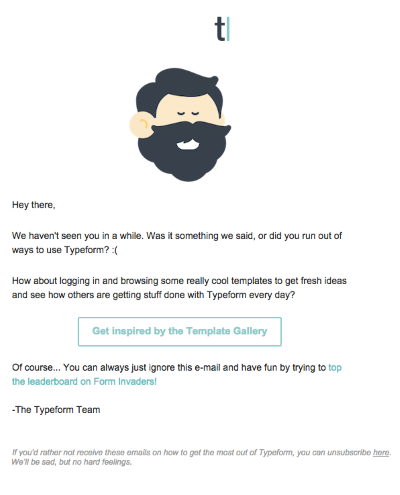
Best Practices for Email Customer Journeys from Flowium
- Make use of A/B testing to improve your email marketing. Try varying the subject lines, content, calls to action, and send times.
- Improve the segmentation of your consumer base. Utilize past interactions, tastes, and habits to craft tailored email content that appeals to particular target segments.
- Focus on improving the frequency and timing. To determine when your audience is most engaged, experiment with different send times. Then, balance the frequency to prevent email weariness.
- Create incredibly engaging and tailored emails by customizing subject lines, content, and product recommendations depending on user activity.
- Monitor important data like as conversions, click-through rates, bounce rates, and open rates.
Customer Journey Final Thoughts
To get the most out of your marketing efforts, you must create email journeys. It’s among the most adaptable, manageable, and successful methods of guiding customers through all the important touchpoints. No doubt, it takes a lot of work to optimize your email customer journey, but it’s not a problem for Flowium. With professional help from our email marketing team, you can accomplish it quickly. Get in touch with us right now to begin building your path to success.
